Should you buy an ergonomic keyboard?
Here are some buying tips and advice if you are considering swtiching to an ergonomic PC keyboard.
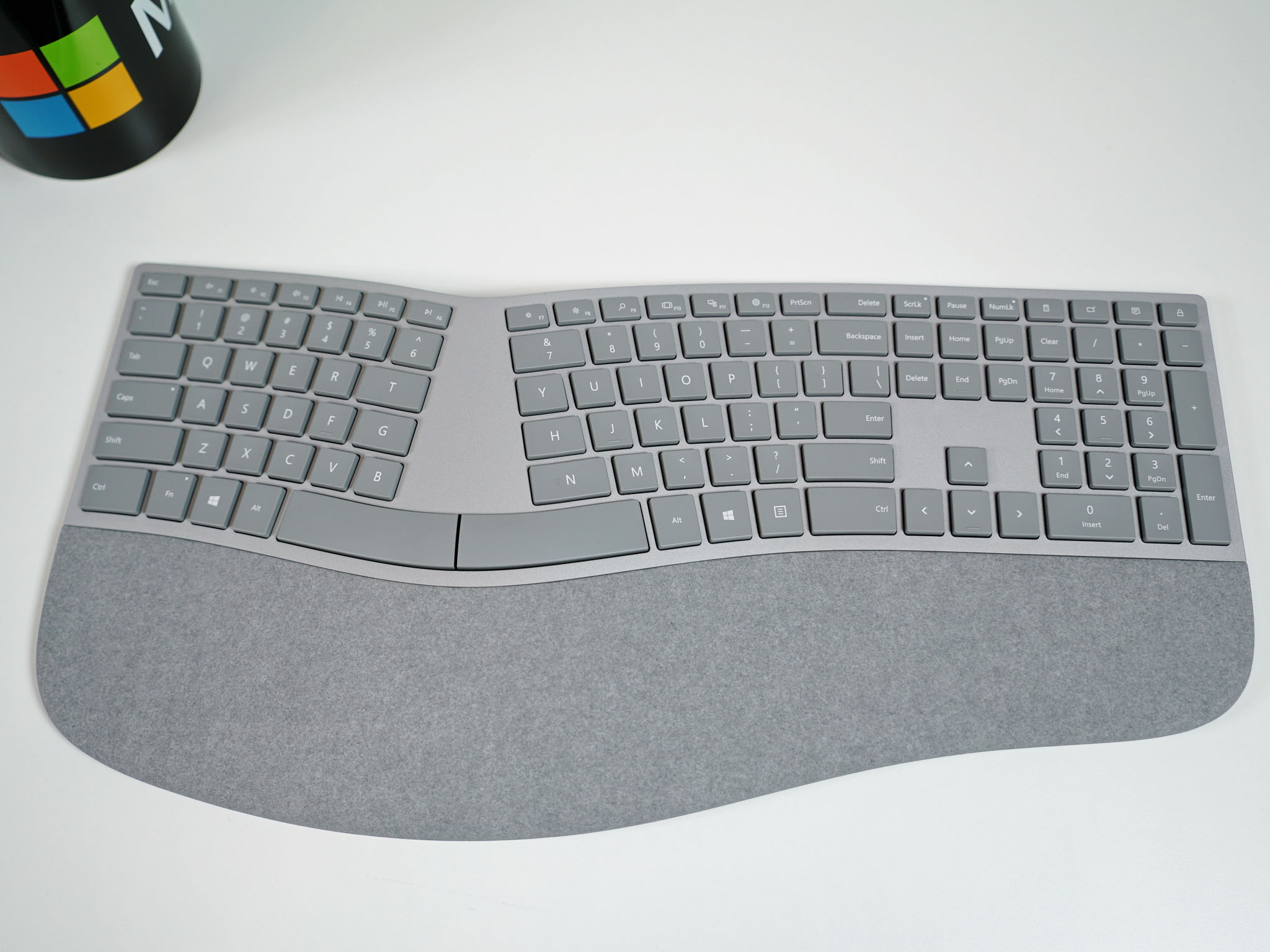
A few months back, I reviewed the Surface Ergonomic Keyboard, which is an updated version of the Sculpt Ergonomic from years past. Ergonomic keyboards are very divisive because typing is such a personal experience. People adapt to something they use extensively, and it is hard to imagine something being any better.
The question is, should you try an ergonomic keyboard? Here are a few considerations if you're contemplating one.
What is an ergonomic keyboard?
Ergonomic keyboards focus on natural hand and wrist position for long typing sessions. The most common keyboards users get with PCs, including Microsoft's Surface Keyboard, are just elongated rectangles with 108 keys.
While these keyboards are excellent for short durations, users must squeeze their shoulders, elbows, and wrists together to make their hands perpendicular to the keyboard deck.
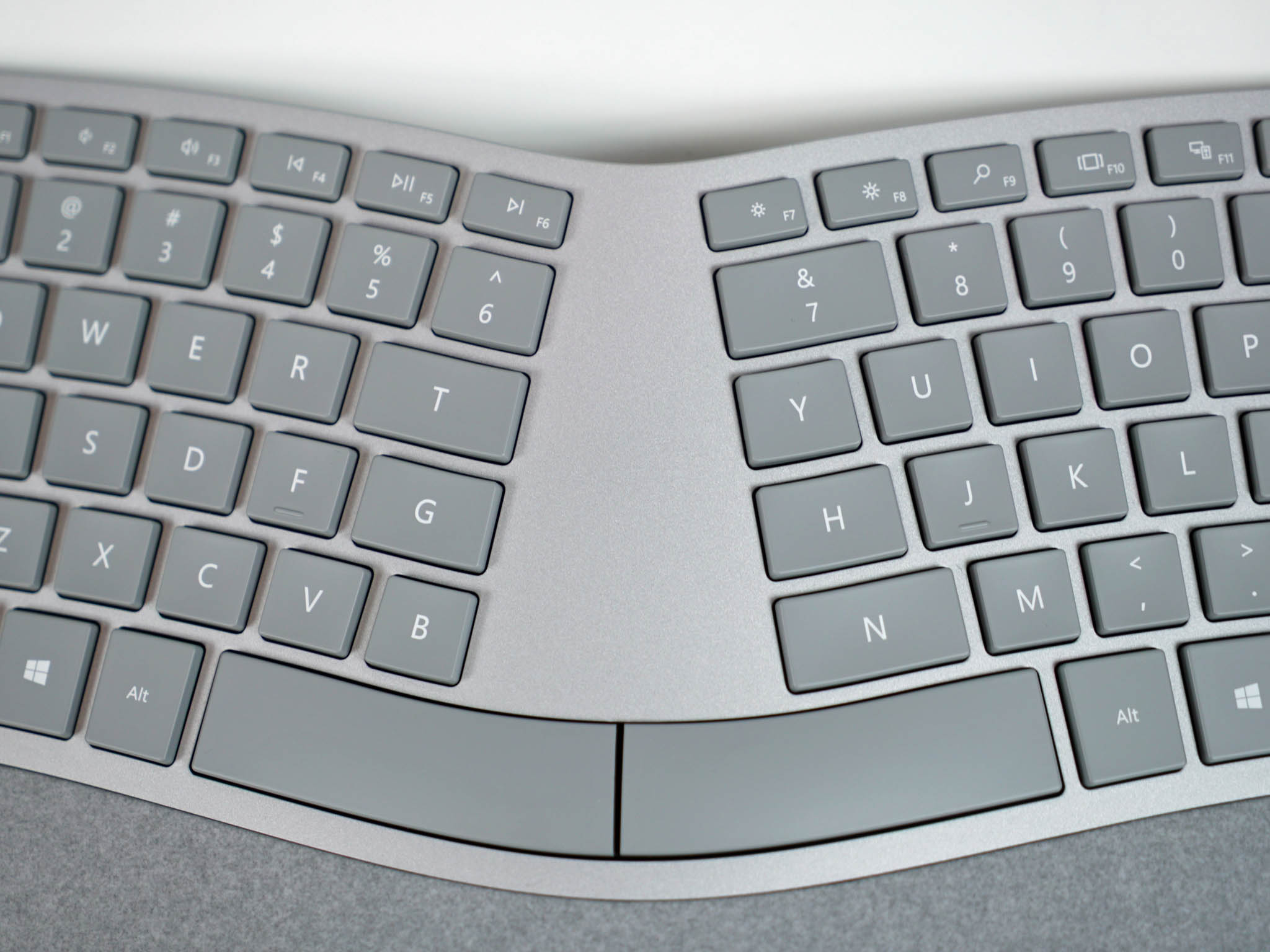
Alternatively, science referred to as human factors and ergonomics (HF&E) studies how human bodies interact with hardware in an attempt at optimization. This type of research is used by Microsoft across the board for Xbox gaming controllers, mice, keyboards, and even HoloLens so that the device fits naturally and does not cause excessive fatigue.
Typically, ergonomic keyboards split the keyboard keys down the middle between TGB and YHN and the space bar. Those sides are then angled upwards and sometimes domed so that the center is higher than where your pinkies go.
Using an ergonomic keyboard for the first time is very disconcerting. While it will feel better for your wrists and elbows, it is usually not an instant love. I used an ergonomic keyboard for many years, switched to a "regular" keyboard and then went back, and it still took me a week before it felt "right" again.
Get the Windows Central Newsletter
All the latest news, reviews, and guides for Windows and Xbox diehards.
So, why do it? In the long-run, typing on an ergonomic keyboard just feels better, your arms tire less, and you can even type faster and more accurately. Plus, you will reduce repetitive strain injuries (RSI) where you can cause damage to muscles, tendons, and nerves from typing.
Do you game a lot on the PC?
I'm not a hardcore PC gamer. But if there is one thing I do know, it's players love gaming-specific keyboards with anti-ghosting abilities, mechanical switches, macro keys, and good backlighting.
While you can get some of that in an ergonomic keyboard like the Mistel Barocco Ergonomic Split ($167), most mainstream ergo keyboards will not be a desirable choice. With the Mistel, however, you can at least pick which Cherry MX switches you want (Brown, Cherry, Blue, and Red).
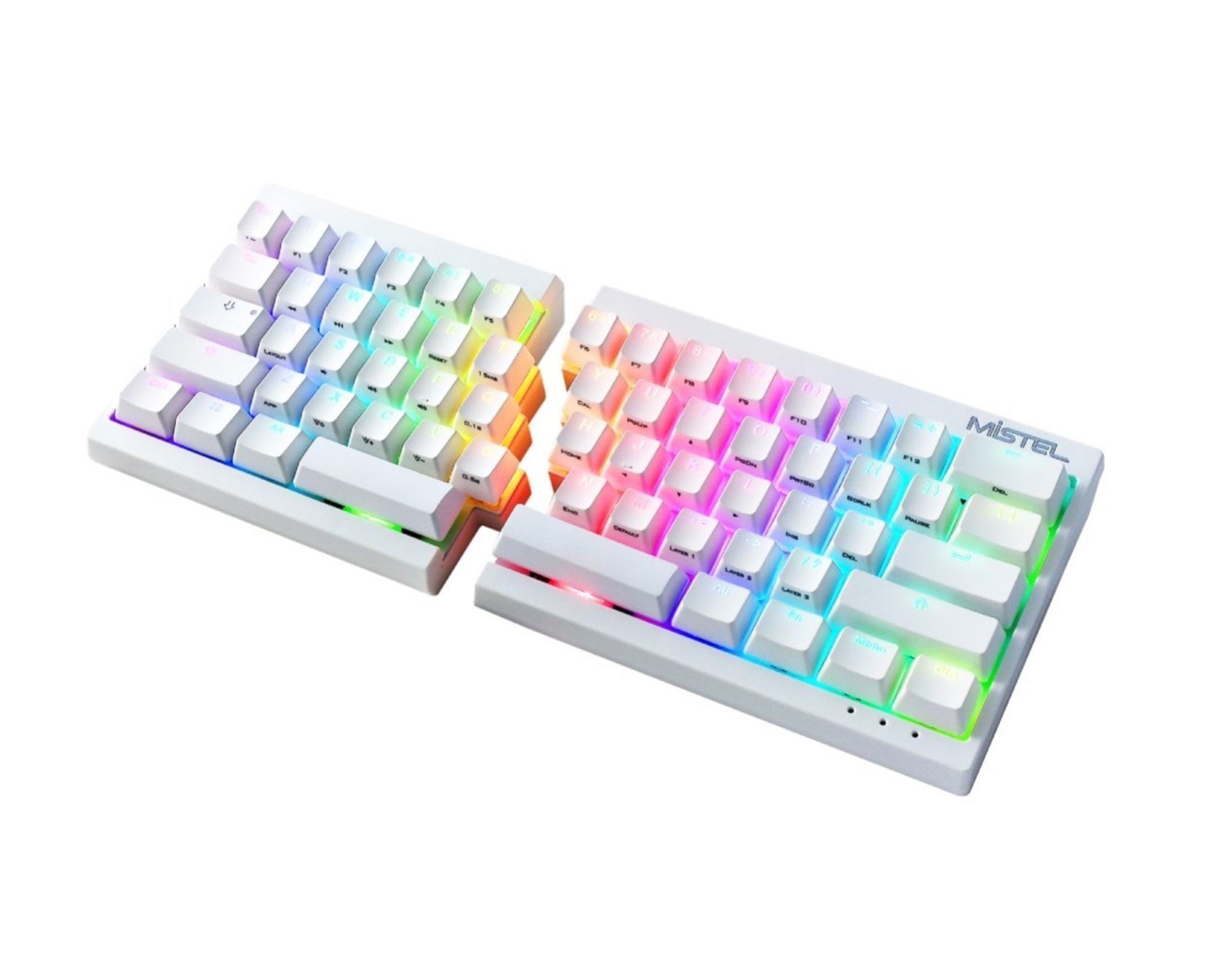
The Mistel is not a traditional ergonomic keyboard that has a curved design, but the Split does allow custom configuration and alignment to better match your wrist position. The downside is you have two halves of a keyboard that can slide around a bit on your desktop.
See Mistel Barocco Ergonomic Split PBT RGB Mechanical Keyboard
So, you "hunt and peck" for typing
Two of the most valuable classes I took in high school were Typing 101 and Typing 102. I had no plans to be a writer, but here we are, and I'm grateful to my teacher for drilling us repeatedly. The reason is that I'm a "real" typist, which sounds elitist, but it just means I type with all hands down looking at the screen and typing as fast as I can think.
Many people do the "hunt and peck" method typing with their index finger. They look at the keyboard, find the letter, look up at the PC screen and then the keyboard.
For those typists who "hunt and peck" there is no reason to consider and ergonomic keyboard. These devices are made for individuals who type with all four fingers and the thumb looking to maximize efficiency, typing speed, and alleviate fatigue.
How to shop for one?
The ratio of regular keyboards to ergonomic ones is about 20:1 making a choice to buy one hard and limited. Microsoft is likely the most well-known maker of ergo keyboards.
The Surface Ergonomic ($129) offers an excellent typing experience, but recent concerns over the Alcantara degrading over time raises some flags. The Alcantara used here is different from the new Surface Pro and Surface Laptop, which has an extra polyurethane coating to help protect it – the Surface Ergonomic does not. Indeed, after many months following my review I too have seen some wear, which is a shame.
See Surface Ergonomic Keyboard
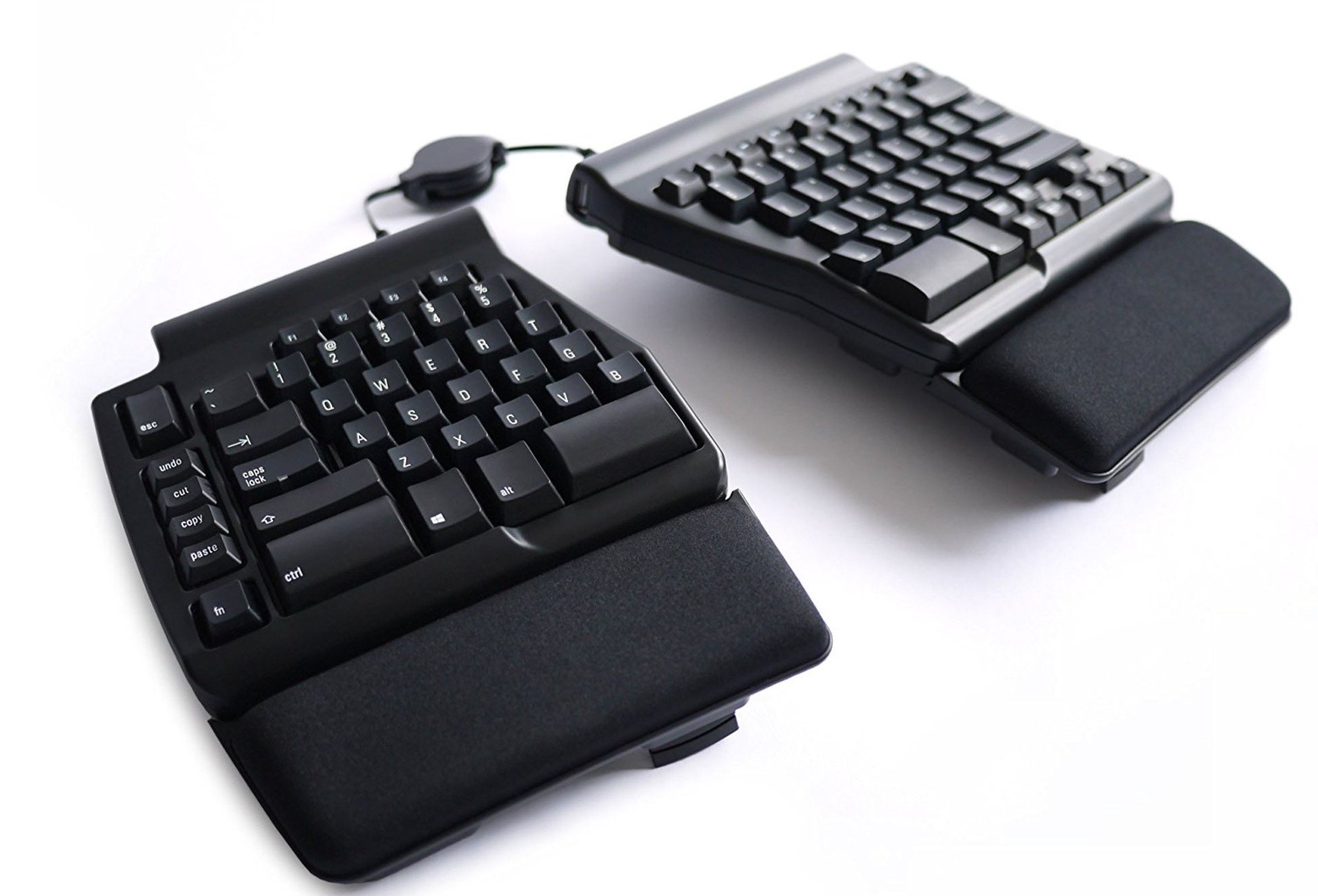
The Matias Ergo Pro Keyboard ($195) is also an impressive offering, but very expensive (I have that one as well). The Kinesis Freestyle2 Ergonomic Keyboard ($134) gets good reviews and is cheaper.
Probably one of the craziest keyboards is the $340 Kinesis KB600 Advantage2, which is bizarre looking. It too has its adherents who adore it, and even I'm tempted to give it a go (for science!).
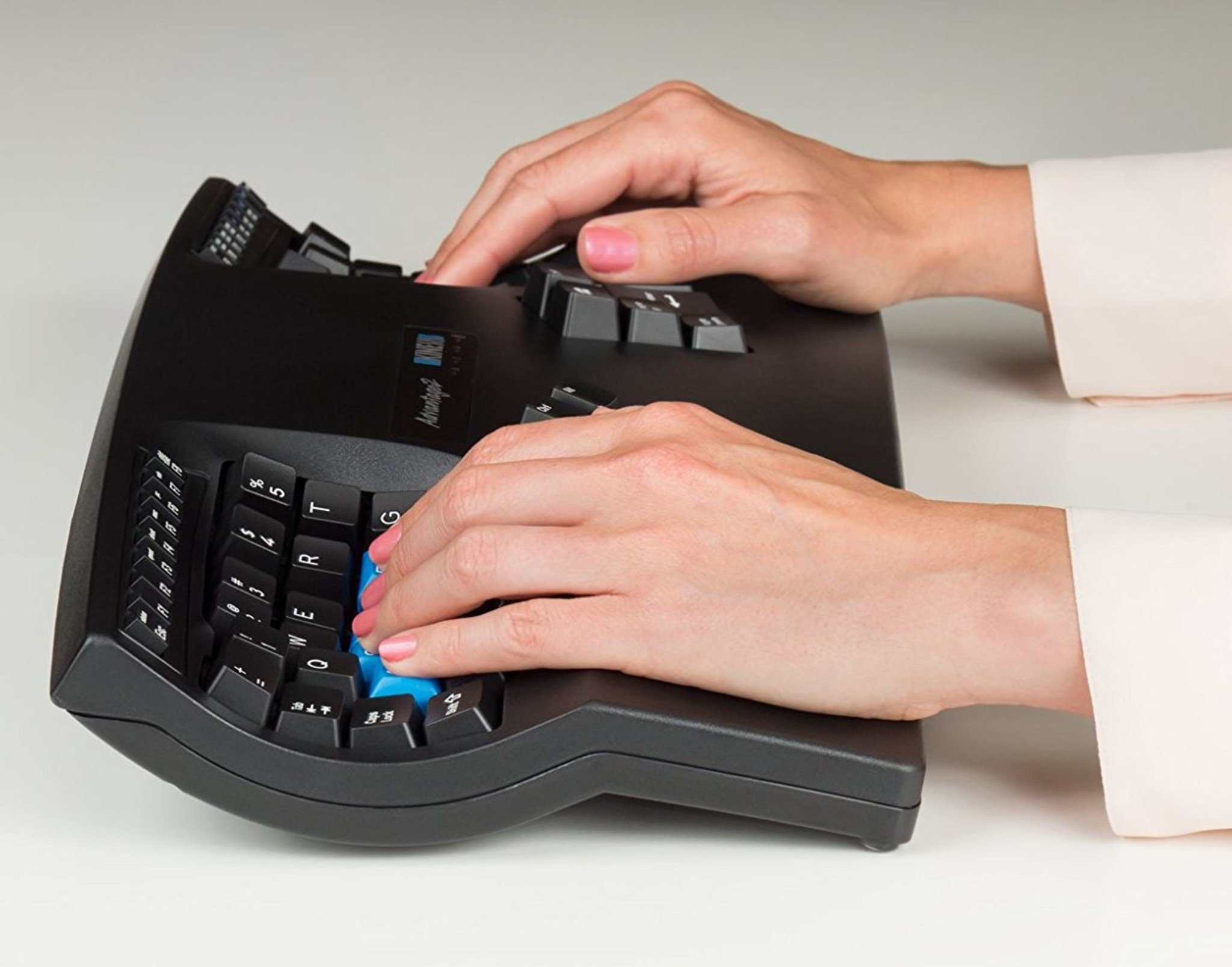
What's fun about these keyboards is just how radically different they can look, yet look natural at the same time.
Finally, the "classic" Microsoft Natural Ergonomic Keyboard 4000 is still available for a very doable $56. This keyboard looks dated because it came out originally in 2005. It's still around though because people swear by it and – let's face it – it's one of the more affordable ones on the market. You can also still find the Microsoft Sculpt Ergonomic – the predecessor to the current Surface Ergonomic sans Alcantara – though it's about two times the cost ($114) of the Natural Ergonomic Keyboard 4000.
Take your time and shop smartly
My advice for anyone considering an ergonomic keyboard is straightforward:
- Go to Best Buy or your local PC store to see what they have on hand, and; try one in person.
- Order from Amazon.com or any online retailer that has a lenient return policy with no restocking fee.
- Order a few different models! It may seem odd, but try to order two or three different models and types of ergonomic keyboards. Just try them at home and see which you like the most, and then send the other back.
- Ergonomic keyboards take time to adjust too, and I'm talking possibly a few weeks, not hours. The reason people swear by them though is that the switch is worth it.
In the end, picking an ergonomic keyboard is difficult. The industry caters to regular keyboards, shoppers do not get much opportunity to sample them in person, and they can be expensive. If, however, you are a serious typist I urge you to consider making the switch.
With the advent of microeconomies, small-scale companies, and distributors like Amazon you can now have a much wider selection of real ergonomic keyboards compared to 10 years ago. There are some fascinating devices out there, and you may find one that suits you very well.
Are you an ergonomic keyboard user? Let us know in comments which keyboard you use and why, or share some advice to those who may want to switch!

Daniel Rubino is the Editor-in-chief of Windows Central. He is also the head reviewer, podcast co-host, and analyst. He has been covering Microsoft since 2007 when this site was called WMExperts (and later Windows Phone Central). His interests include Windows, laptops, next-gen computing, and wearable tech. He has reviewed laptops for over 10 years and is particularly fond of 2-in-1 convertibles, Arm64 processors, new form factors, and thin-and-light PCs. Before all this tech stuff, he worked on a Ph.D. in linguistics, performed polysomnographs in NYC, and was a motion-picture operator for 17 years.
